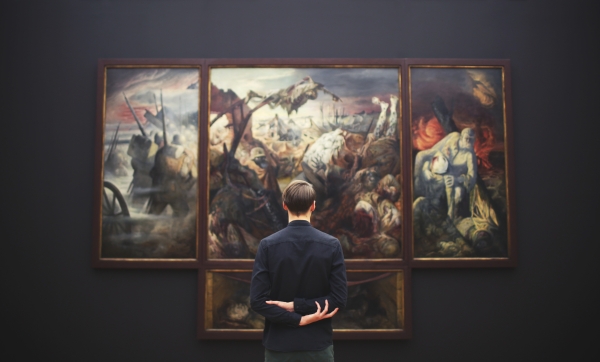
After somebody threw a flask of acid on the Mona Lisa in 1956, they put her behind bulletproof (and presumably acid-proof) glass. Same with Picasso’s Guernica, after a man spray-painted “Kill all lies” in giant red letters across the canvas.
I have always found it unbelievable that most very famous paintings have no physical barrier between them and the visitors. At MoMA in New York, I wandered around a small wall, turned, and was alarmed to discover Starry Night by Vincent van Gogh, hardly more than an arm’s length away from my distracted, clumsy body.
The hundred-million-dollar painting is protected only by a line of tape on the floor about two feet from the wall, presumably marking the distance at which your communion with the painting becomes too intimate and the security guard must lean in and scold you.
The vast majority of famous artworks on display are protected only by similar lines of tape, shin-high string fences, or in more extreme cases, velvet ropes. Amazingly, these non-barriers are sufficient to keep the vast majority of gallery visitors from mucking with the world’s most valuable art. None of these boundaries could stop a determined vandal, but they do seem to prevent nearly 100% of the rest of us from getting inappropriately close. (The guards would quickly tackle you of course, but I’m pretty sure they aren’t allowed to tackle you before you start clawing at the artwork.) Read More
 I'm David, and Raptitude is a blog about getting better at being human -- things we can do to improve our lives today.
I'm David, and Raptitude is a blog about getting better at being human -- things we can do to improve our lives today.
Thank you for your reply. I feel very lucky indeed that I managed to pass that threshold with exercise, I know that for many people it’s a real struggle. Hopefully one day I can also pass it with meditation. :) I almost gave up on trying, but I will try...